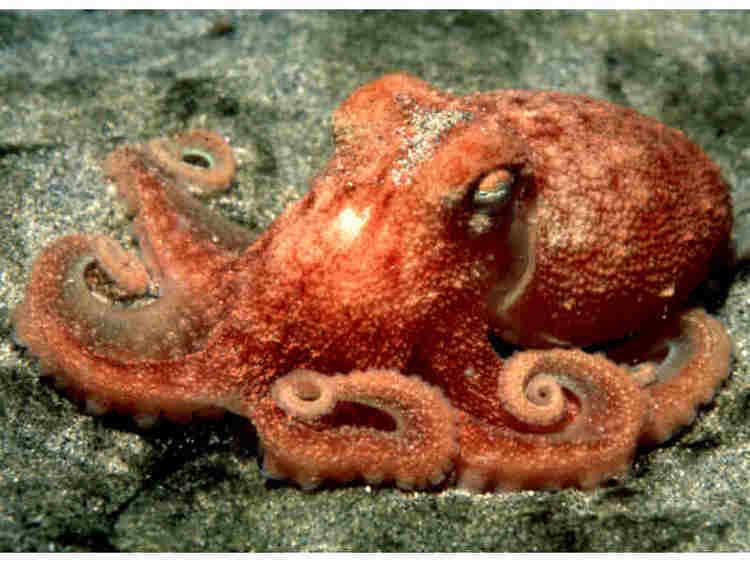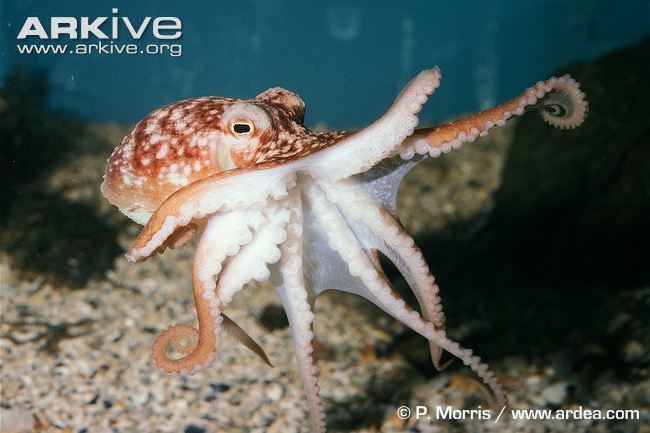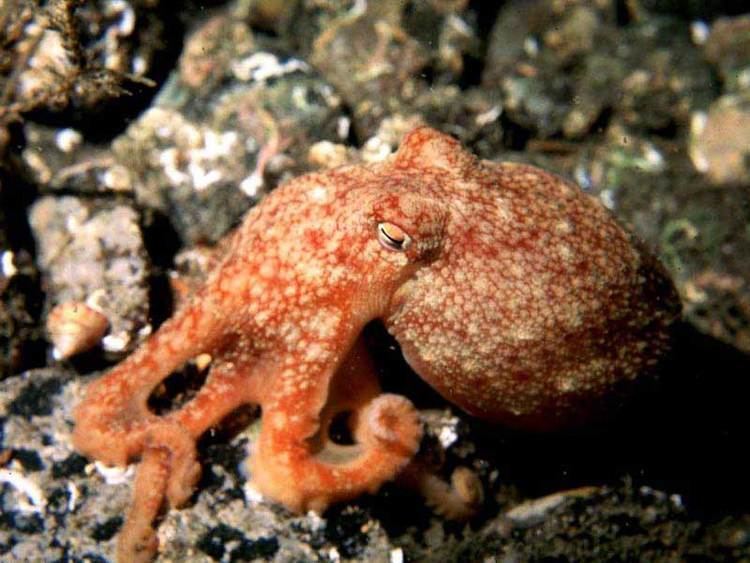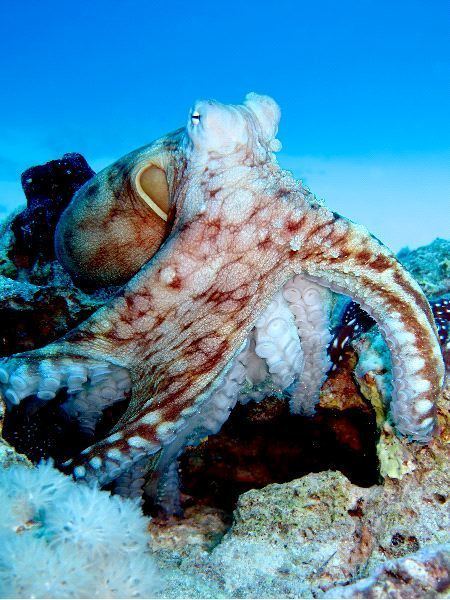Family Octopodidae Rank Species | Order Octopoda Genus Eledone | |
 | ||
Similar Eledone, Eledone moschata, Alloteuthis subulata, Loligo forbesii, Alloteuthis | ||
The curled octopus (Eledone cirrhosa), also known as the horned octopus, lesser octopus or northern octopus, is a species of cephalopod found in the northeast Atlantic, ranging from Norway to the Mediterranean, including the British Isles.
Contents
- New curled octopus get to know each other
- Description
- Habitat and distribution
- Diet
- Biology
- Fisheries
- References

New curled octopus get to know each other
Description

It has a broad, ovoid-shaped mantle and can reach a total length (including arms) of up to 50 cm (20 in). The head is narrower than the rest of the body with a filament over each eye. The octopus's colour is yellowish or reddish-orange to reddish-brown dorsally with diffuse rust-brown patches, and white on the underside. The skin is covered with very fine, closely set granulations, interspersed with larger warts. The relatively short arms have a single series of suckers on them and at rest are held with the tips lightly curled, hence the species's common name.
Habitat and distribution

The curled octopus is mainly found at depths between 0 and 150 m (0 and 492 ft) and may occur down to 800 m (2,600 ft). It lives in the northeast Atlantic Ocean, including the English Channel, the North Sea, and the Mediterranean Sea. In recent years the North Sea populations have increased, probably due to overfishing of large predatory fish such as Atlantic cod. This has had a knock on effect on crab and lobster fisheries as the curled octopus readily enters pots to take the bait or the catch. In seas of Scotland, E. cirrhosa is infrequently caught when trawling over rocky substrates and are more frequently captured when fishing over sandy or muddy substrates. A survey using different methods found that Eledone cirrhosa was common and widespread throughout the Scottish inshore waters covered by fishing activity, from the shoreline down to 140m, on substrates ranging through rocky, stoney, sandy and muddy. Specimens were caught throughout the year but is most common in inshore waters during the summer months and moves further offshore to the trawling grounds in October–December.
Diet

The curled octopus feeds on crabs and other large crustaceans, as well as fish. Serological analysis of the crtop contents of specimens sampled in the Moray Firth and Sound of Jura revealed the main prey to be Liocarcinus spp, Nephrops norvegicus, Cancer pagurus , Crangon crangon and Carcinus maenas, although a large proportion of the samples analysed did not react in the tests suggesting they had consumed alternative prey. It is cited as a significant predator of such commercially important species as Homarus gammarus (European lobster), Nephrops norvegicus (Norway lobster), and Cancer pagurus (edible crab) from traps. When preying on crabs, it immobilises the crab by injecting toxins into the body of the crab through a hole created in its shell using the octopus's radula. The octopus then injects saliva into the crab and the digestive enzymes contained in that saliva break down the carb's internal attachments to it shell, allowing the octopus to easily remove the carapace.
Biology

The growth rate of the curled octopus is quite rapid and its life span is generally short at 1–5 years, although there may be some variation between warmer and colder areas. The curled octopus matures at around 1 year (on reaching a total length of 12–40 cm or 4.7–15.7 in for females, slightly smaller for males) and with 1,000–5,000 eggs laid on average. The females normally attain sexual maturity when they reach a body size of between 400–1000 g but some females weighing up to 1000–1200 g show no evidence of enlargement of the ovaries. The males reach just over 600g and typically have well-developed reproductive organs from around 200g. It breeds at a lower rate than the partially sympatric Octopus vulgaris (common octopus). Populations are apparently at their lowest density in the autumn, probably due to post-spawning die off as reproduction involves females laying eggs, guarding them and dying once the eggs hatch. Curled octopuses are solitary animals, generally inhabiting depths of less than 100 m (330 ft), and more common in shallow water, but they have been found down to 800 m (2,600 ft).
Analysis carried out on the stomach contents of stranded Risso’s dolphins demonstrates that the most important species fed on in Scottish waters is the curled octopus.
Fisheries
The curled octopus is taken as bycatch in trawl fisheries for other species. It is also captured in earthenware pots in the Mediterranean, although the fishery for curled octopuses is less important than that of the common octopus. International Council for the Exploration of the Sea (ICES) catch data for both the curled octopus and common octopus, from all ICES regions (NE Atlantic) in 2006, indicated around 8,999 tonnes, but more recent estimates indicate a substantial increase to around 19,000 tonnes in 2008 (ICES WGCEPH, 2010). Nearly all landings of both species within these regions are taken by Portugal and Spain, with Spain taking the vast majority, although most of these will be of the common octopus. Neither species is subject to either stock assessment or quota controls in Europe and in the case of the curled octopus there is no minimum size for landing. In the Adriatic this species is caught and sold alongside Eledone moschata but is the less numerous of the two. It is not regarded as a commercially viable species in Scotland and any caught are normally discarded.
